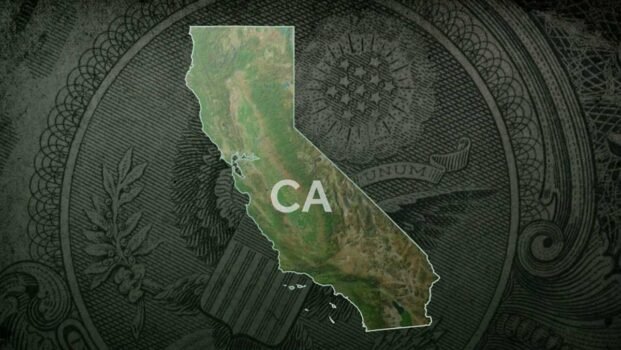California lawmakers and the governor will need to prepare for an $18 billion budget deficit next year, state Legislative Analyst Gabe Petek said Wednesday. Petek leads the office of budget and policy watchers that guide the state Legislature in its financial decision-making, known as the Legislative Analyst’s Office. Wednesday’s update is part of the budget outlook report the office releases at this time every year. In a matter of months, state lawmakers and Gov. Gavin Newsom will begin discussing how to use taxpayer dollars for the 2026-2027 budget year, a plan that needs to be in place by July 2026. The governor will present his first draft in January. In the report, the office stated the $18 billion budget deficit for the 2026-2027 budget year is about $5 billion more than state officials were anticipating. The report noted the state is spending more money than it’s bringing in and pointed to programs that are costing about $6 billion more than expected overall. “Frankly the budget condition has become relatively weak,” Petek said on a call with reporters Wednesday. Petek stated the federal government’s policies around tariffs and healthcare spending are having an impact on the spending plan. While the office was unable to put a dollar amount on the impacts of tariffs, it noted the federal government’s healthcare spending bill will result in a $1.3 billion hit to the state’s general fund. Petek noted the stock market is doing well with enthusiasm around artificial intelligence. Despite the strong personal income tax revenues that’s bringing into the state, Petek appeared unconvinced that the situation would be sustainable enough to fix the state’s overall structural budget problem. The LAO said in its report said the state faces budget shortfalls of about $35 billion a year in the years to come. California currently has $14 billion left in its reserves. H.D. Palmer, Gov. Newsom’s Department of Finance spokesman said the department agreed with several points Petek and the LAO made in Wednesday’s report. Palmer noted Newsom’s Department of Finance had been anticipating the deficit to be $17 billion. “The analyst has covered and highlighted a number of the risks and challenges highlighted throughout the last year. Things like record uncertainty from the federal level, market volatility, pressures on both costs and caseloads for some of our major programs,” Palmer said. “We’re still determining what the scope of the problem is from our estimate.” The update signals California will face the fourth straight year grappling with a budget deficit. In previous years, lawmakers and the governor have been hesitant to make major spending changes and have largely relied on borrowing, delaying, or shifting costs. Petek said those strategies will soon expire and the debt will be owed. Petek’s office advised lawmakers to fix the problem by either cutting spending or finding ways to bring in more revenue. The report states the action is “critical” because the state faces significant structural deficits in the years to come, the issue could be exacerbated by a recession, and because the state has used a lot of its rainy-day resource to address the last three years’ worth of budget shortfalls. Petek and the LAO stopped short of making specific recommendations around specific budget cuts and proposed taxes. Palmer could not say what Newsom may propose to do. “We’ll provide a range of options based upon what the size of the shortfall is and he’ll make his decision based on that. What you’ve seen him do in the past is, he is more focused on controlling the growth in spending,” Palmer noted.Newsom will present the first draft of his state spending plan in early January. See more coverage of top California stories here | Download our app | Subscribe to our morning newsletter | Find us on YouTube here and subscribe to our channel
California lawmakers and the governor will need to prepare for an $18 billion budget deficit next year, state Legislative Analyst Gabe Petek said Wednesday.
Petek leads the office of budget and policy watchers that guide the state Legislature in its financial decision-making, known as the Legislative Analyst’s Office. Wednesday’s update is part of the budget outlook report the office releases at this time every year.
In a matter of months, state lawmakers and Gov. Gavin Newsom will begin discussing how to use taxpayer dollars for the 2026-2027 budget year, a plan that needs to be in place by July 2026. The governor will present his first draft in January.
In the report, the office stated the $18 billion budget deficit for the 2026-2027 budget year is about $5 billion more than state officials were anticipating. The report noted the state is spending more money than it’s bringing in and pointed to programs that are costing about $6 billion more than expected overall.
“Frankly the budget condition has become relatively weak,” Petek said on a call with reporters Wednesday.
Petek stated the federal government’s policies around tariffs and healthcare spending are having an impact on the spending plan. While the office was unable to put a dollar amount on the impacts of tariffs, it noted the federal government’s healthcare spending bill will result in a $1.3 billion hit to the state’s general fund.
Petek noted the stock market is doing well with enthusiasm around artificial intelligence. Despite the strong personal income tax revenues that’s bringing into the state, Petek appeared unconvinced that the situation would be sustainable enough to fix the state’s overall structural budget problem.
The LAO said in its report said the state faces budget shortfalls of about $35 billion a year in the years to come. California currently has $14 billion left in its reserves.
H.D. Palmer, Gov. Newsom’s Department of Finance spokesman said the department agreed with several points Petek and the LAO made in Wednesday’s report. Palmer noted Newsom’s Department of Finance had been anticipating the deficit to be $17 billion.
“The analyst has covered and highlighted a number of the risks and challenges highlighted throughout the last year. Things like record uncertainty from the federal level, market volatility, pressures on both costs and caseloads for some of our major programs,” Palmer said. “We’re still determining what the scope of the problem is from our estimate.”
The update signals California will face the fourth straight year grappling with a budget deficit. In previous years, lawmakers and the governor have been hesitant to make major spending changes and have largely relied on borrowing, delaying, or shifting costs. Petek said those strategies will soon expire and the debt will be owed.
Petek’s office advised lawmakers to fix the problem by either cutting spending or finding ways to bring in more revenue. The report states the action is “critical” because the state faces significant structural deficits in the years to come, the issue could be exacerbated by a recession, and because the state has used a lot of its rainy-day resource to address the last three years’ worth of budget shortfalls.
Petek and the LAO stopped short of making specific recommendations around specific budget cuts and proposed taxes.
Palmer could not say what Newsom may propose to do.
“We’ll provide a range of options based upon what the size of the shortfall is and he’ll make his decision based on that. What you’ve seen him do in the past is, he is more focused on controlling the growth in spending,” Palmer noted.
Newsom will present the first draft of his state spending plan in early January.
See more coverage of top California stories here | Download our app | Subscribe to our morning newsletter | Find us on YouTube here and subscribe to our channel








